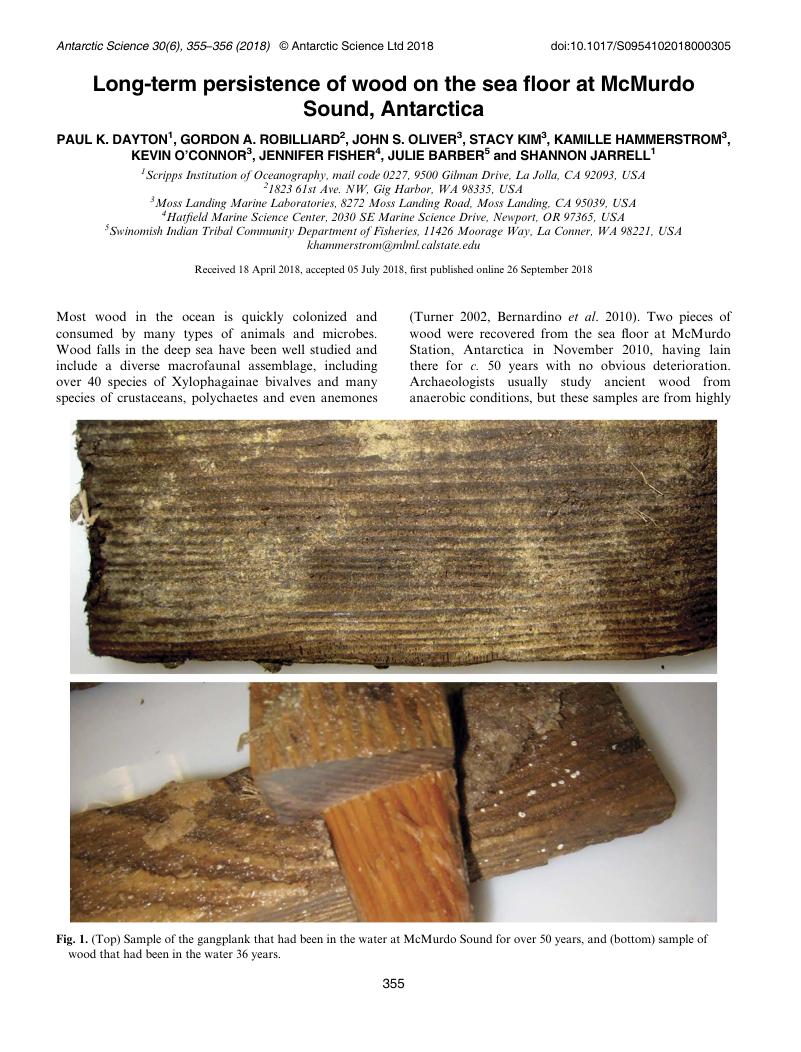Crossref Citations
This article has been cited by the following publications. This list is generated based on data provided by Crossref.
Björdal, Charlotte G.
and
Dayton, Paul K.
2020.
First evidence of microbial wood degradation in the coastal waters of the Antarctic.
Scientific Reports,
Vol. 10,
Issue. 1,



